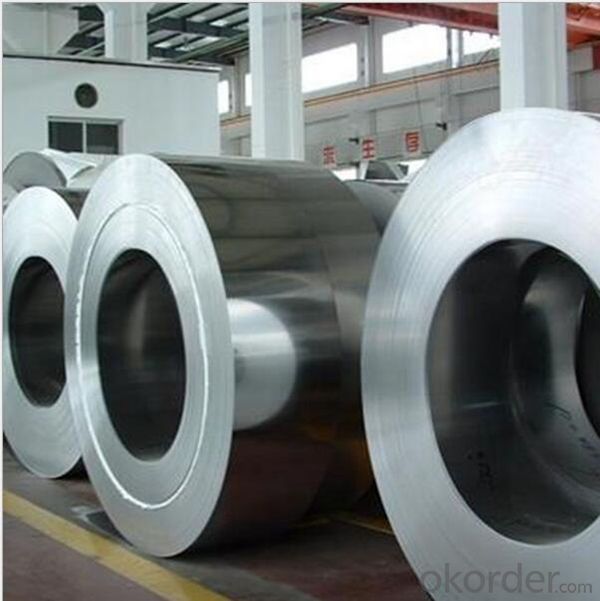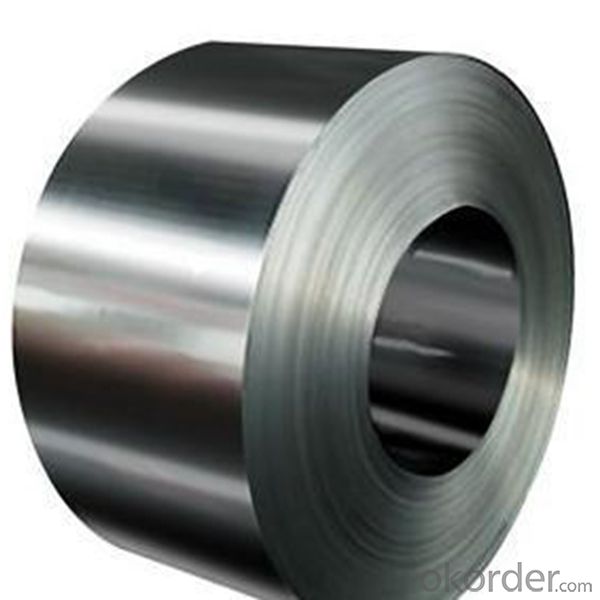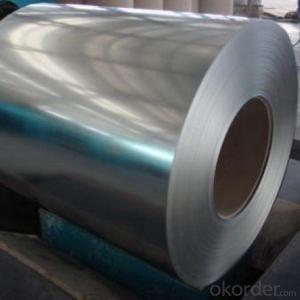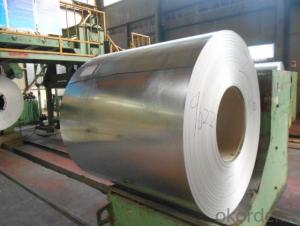Hot Rolled Stainless Steel NO.1 Finish Grade 316L
- Loading Port:
- China main port
- Payment Terms:
- TT OR LC
- Min Order Qty:
- 22 m.t.
- Supply Capability:
- 2000000 m.t./month
OKorder Service Pledge
OKorder Financial Service
You Might Also Like
Item specifice
Products Description for Stainless Steel Coils/Sheets:
Prodcut:Stainless Steel Coil
Thinckness: 0.20mm-8.0mm
Width:1000mm, 1219mm(4 feet), 1250mm, 1500mm, 1524mm(5 feet),
1800mm, 2000mm, 2200mm, 2500mm,and customizable
Ni:0.8~1.2% Cu:1.4~1.5% Cr:14
Standard: ASTM, JIS, GB, BS, DIN etc
Grade: 200series&300series&400series
Surface finish: 2B, BA, 8K, 6K, Mirror Finished, No1, No2, No4, Hair Line with PVC
Manufacture technology: cold rolled/hot rolled
Thickness Tolerance: +/-0.1mm
Width Tolerance: +/-10mm
200 Seriers: 201,202
300 Seriers: 301, 304, 304L, 316L, 309, 310S,321
400 Seriers: 410, 410S, 409L,430
Features of Stainless Steel Coils
(1)Good ductility
(2)Good corrosion resistance
(3)Excellent abrasion resistance and fatigue strength
(4)Good weldability
(5)Oxidation resistant performance
(6)Excellent in high temperature
Detail picture for Stainless Steel Coils/Sheet




Payment&Delivery for Stainless Steel Coils/Sheets:
Payment Terms | 100% LC at sight,or 30%TT in advance, balance against B/L copy |
Delivery Time | With 30-40 days after deposit |
Price Terms | Ex-Work, FOB, CNF, CFR, CIF,etc |
Export Markets for Stainless Steel Coils/Sheets:
Our target market is the international market. Every year we export most of products to countries like India, Pakistan, South Korea, Brazil, Australia, South Africa, Spain, Sri Lanka, Taiwan, Hong Kong, etc.
FAQ for Stainless Steel Coils/Sheets:
Q: How long is the delivery time?
A: Normally 30-40 days, but mostly according to the specific requirements or the quantity
Q: Could you send me sample?
A: We can supply you with the sample for free, but the delivery charges will be covered by customers.
- Q:How do you determine the best grade of stainless steel sheet for a specific application?
- Determining the best grade of stainless steel sheet for a specific application involves considering several factors. Firstly, it is important to assess the environmental conditions the sheet will be exposed to, such as temperature, humidity, and potential exposure to corrosive substances. This will help determine the required corrosion resistance of the stainless steel. Secondly, the mechanical properties required for the application should be considered. This includes factors like strength, hardness, and ductility. The intended use of the stainless steel sheet, whether it is for structural purposes or for a decorative application, will help determine the necessary mechanical properties. Additionally, the fabrication process and any subsequent treatments or finishes should be taken into account. Some grades of stainless steel may be more suitable for forming, welding, or machining, depending on their composition and characteristics. Furthermore, it is important to consider the cost implications of different stainless steel grades. Higher grades often come with a higher price tag, so it is crucial to balance the required performance with the available budget. To determine the best grade of stainless steel sheet, it is advisable to consult with experts in the field, such as stainless steel suppliers or engineers with expertise in materials selection. They can provide guidance based on their knowledge and experience, taking into consideration the specific requirements of the application.
- Q:Are stainless steel sheets resistant to heat?
- Stainless steel sheets exhibit exceptional heat resistance due to their composition as a steel alloy rich in chromium. This high chromium content imparts impressive heat resistance properties, allowing stainless steel sheets to endure high temperatures without warping, deforming, or compromising their structural integrity. Consequently, stainless steel sheets find widespread use in various applications that demand heat resistance, including the construction of ovens, cookware, industrial equipment, and automotive components. Moreover, the superior oxidation resistance of stainless steel sheets ensures that they retain their appearance and properties even when exposed to elevated temperatures. Altogether, choosing stainless steel sheets proves advantageous when heat resistance is a critical requirement.
- Q:Can stainless steel sheets be used for elevator flooring?
- Yes, stainless steel sheets can be used for elevator flooring. Stainless steel is a popular choice for elevator flooring due to its durability, strength, and resistance to corrosion. It is able to withstand heavy foot traffic and is easy to clean and maintain. Additionally, stainless steel is visually appealing and can add a sleek and modern look to elevators.
- Q:What's the difference between 304 stainless steel and 314?
- 304 stainless steel is a universal stainless steel material: 314 stainless steel; high temperature oxidation resistance and strong mechanical properties; high heat resistant stainless steel, and 314 austenitic stainless steel, high temperature oxidation resistance and creep resistance. 314 stainless steel used in furnace tube difference
- Q:How do I prevent crevice corrosion on stainless steel sheets?
- To prevent crevice corrosion on stainless steel sheets, there are several steps you can take: 1. Choose the right stainless steel grade: Ensure that you are using a stainless steel grade that is resistant to crevice corrosion. Grades such as 316 and 317L are known to have excellent resistance to this type of corrosion. 2. Proper design: When designing structures or equipment, avoid creating crevices or areas where water or other corrosive substances can accumulate and remain stagnant. Minimize gaps, sharp edges, and overlapping surfaces to reduce the risk of crevice corrosion. 3. Regular cleaning and maintenance: Clean the stainless steel sheets regularly to remove any contaminants, deposits, or corrosive substances that may have accumulated. Use mild detergents and non-abrasive cleaning agents to avoid damaging the protective oxide layer on the stainless steel surface. 4. Avoid using chloride-rich environments: Chloride ions are known to accelerate crevice corrosion on stainless steel. Avoid exposing the sheets to environments with high chloride concentrations, such as saltwater, chlorinated solutions, and certain industrial chemicals. 5. Apply protective coatings: Consider applying protective coatings or finishes to the stainless steel sheets. These coatings act as a barrier, preventing direct contact between the stainless steel surface and corrosive substances. However, it is important to choose coatings that are compatible with stainless steel and do not compromise its corrosion resistance. 6. Regular inspection: Inspect the stainless steel sheets regularly for signs of corrosion or damage. Look for any discoloration, pitting, or cracking, especially in areas prone to crevice corrosion. Promptly address any issues to prevent further corrosion and potential structural damage. Remember, prevention is key when it comes to crevice corrosion. By selecting the appropriate stainless steel grade, designing structures to minimize crevices, maintaining cleanliness, avoiding harsh environments, applying protective coatings, and regularly inspecting for damage, you can significantly reduce the likelihood of crevice corrosion on stainless steel sheets.
- Q:Are stainless steel sheets resistant to organic acids?
- Stainless steel sheets, in general, have a resistance to organic acids. The corrosion resistance of stainless steel is well-known, and this quality extends to its ability to withstand the effects of organic acids. However, the level of resistance can vary depending on the specific composition of the stainless steel, as well as the concentration and type of organic acid being used. In certain cases, specific organic acids may cause localized corrosion or pitting on the surface of stainless steel. Nonetheless, stainless steel is considered a suitable material for handling organic acids in various industries like chemical processing, pharmaceuticals, and food production. To ensure the best resistance, it is always advisable to seek expert advice or refer to specific stainless steel grades and their compatibility with different organic acids.
- Q:Are stainless steel sheets resistant to corrosion?
- Yes, stainless steel sheets are generally highly resistant to corrosion due to the presence of chromium in their composition, which forms a protective oxide layer on the surface. This oxide layer acts as a barrier, preventing the metal from being exposed to corrosive elements and ensuring its durability in various environments.
- Q:What are the different types of stainless steel sheet surface finishes available?
- There are numerous options when it comes to stainless steel sheet surface finishes, each with its own distinct qualities and uses. Some of the most commonly used types are as follows: 1. No. 1 Finish, also known as hot rolled annealed and pickled (HRAP), is the most basic and frequently employed finish. It has a rough, lackluster appearance with visible grain lines. This finish is typically utilized in industrial applications where aesthetics are not of primary importance. 2. No. 2B Finish is achieved through cold rolling, heat treating, and pickling the stainless steel. It boasts a smooth, reflective surface with a moderate gloss. This finish is often chosen for applications requiring a clean, uniform appearance, such as kitchen appliances and architectural components. 3. No. 3 Finish is obtained by employing progressively finer abrasives during the polishing process. It offers a semi-polished, satin-like appearance with visible grain lines. This finish is commonly employed for decorative applications like furniture, signage, and automotive trim. 4. No. 4 Finish resembles No. 3, but with a finer grain and higher gloss. It is achieved by utilizing even finer abrasives during the polishing process. This finish finds common use in architectural and decorative applications that necessitate a high-quality, mirror-like finish. 5. No. 8 Finish, also referred to as a mirror finish, is the finest-quality stainless steel sheet surface finish available. It is accomplished by polishing the stainless steel to a highly reflective, mirror-like appearance. This finish is frequently employed in high-end architectural and decorative applications where a flawless, premium finish is desired. In addition to these primary finishes, there are specialized finishes available for specific applications. For instance, a brushed finish creates a textured, brushed appearance by using abrasive belts or brushes against the stainless steel surface. Moreover, there are colored finishes that involve applying a thin layer of color to the stainless steel surface, resulting in a unique and captivating appearance. Ultimately, the choice of stainless steel sheet surface finish depends on the specific application and desired aesthetics, ranging from basic industrial finishes to high-end decorative finishes.
- Q:Are stainless steel sheets suitable for architectural mesh applications?
- Yes, stainless steel sheets are highly suitable for architectural mesh applications due to their durability, resistance to corrosion, and versatility in design. They provide excellent strength and can be easily manipulated into various shapes and patterns, making them ideal for creating aesthetically pleasing and functional architectural elements such as facades, partitions, and decorative screens.
- Q:How are stainless steel sheets finished?
- Stainless steel sheets are finished through various processes such as grinding, polishing, and buffing, which result in different surface textures and appearances.
1. Manufacturer Overview |
|
|---|---|
| Location | |
| Year Established | |
| Annual Output Value | |
| Main Markets | |
| Company Certifications | |
2. Manufacturer Certificates |
|
|---|---|
| a) Certification Name | |
| Range | |
| Reference | |
| Validity Period | |
3. Manufacturer Capability |
|
|---|---|
| a)Trade Capacity | |
| Nearest Port | |
| Export Percentage | |
| No.of Employees in Trade Department | |
| Language Spoken: | |
| b)Factory Information | |
| Factory Size: | |
| No. of Production Lines | |
| Contract Manufacturing | |
| Product Price Range | |
Send your message to us
Hot Rolled Stainless Steel NO.1 Finish Grade 316L
- Loading Port:
- China main port
- Payment Terms:
- TT OR LC
- Min Order Qty:
- 22 m.t.
- Supply Capability:
- 2000000 m.t./month
OKorder Service Pledge
OKorder Financial Service
Similar products
New products
Hot products
Related keywords

































